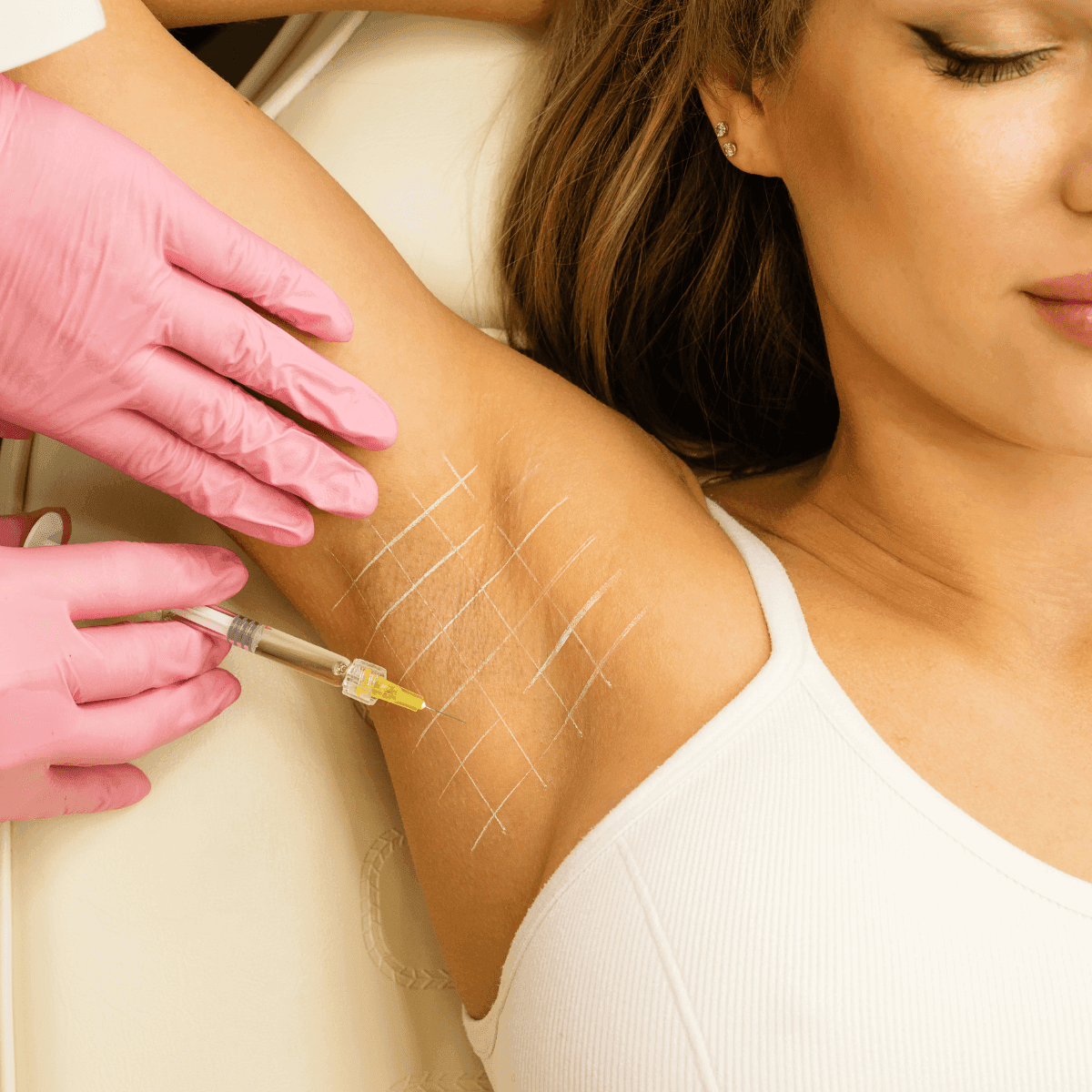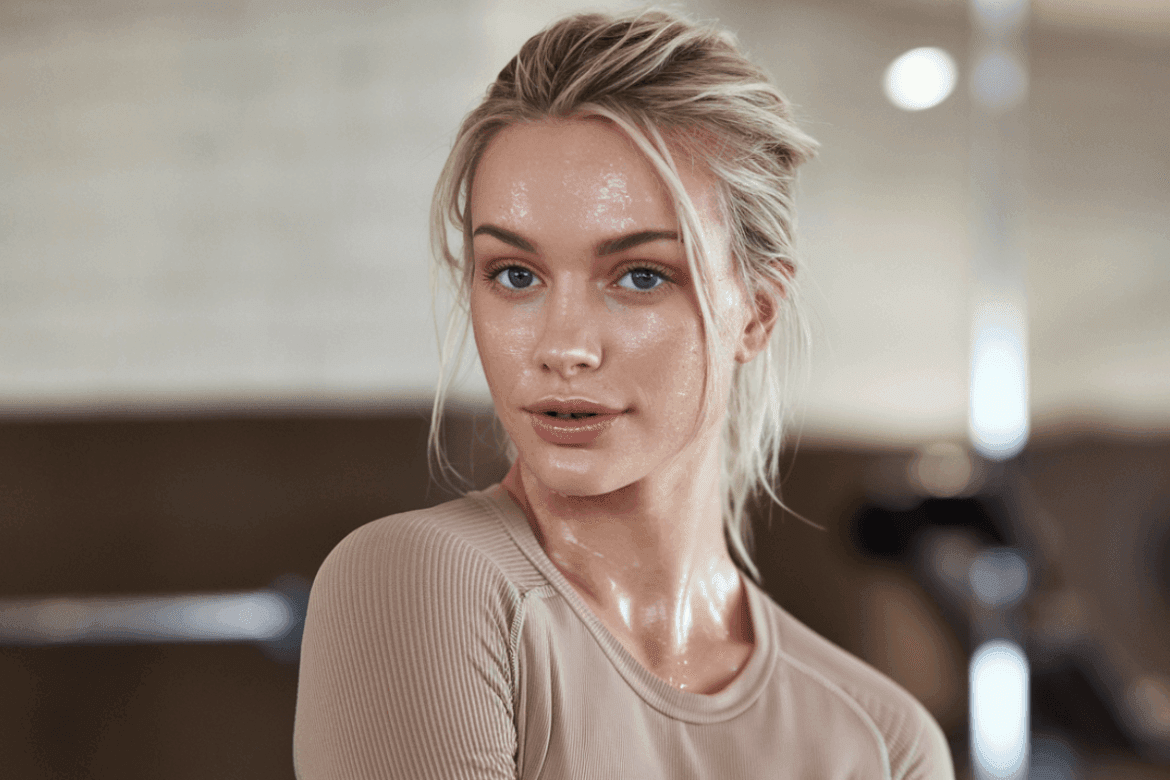If you’ve ever been plagued by sweat marks that seem to appear five minutes after getting dressed, you’re not alone. For some people, excessive sweating (a condition called hyperhidrosis) can make even simple tasks – like shaking hands or wearing your favorite outfit – a source of anxiety. While sweating is the body’s natural cooling mechanism, hyperhidrosis goes into overdrive, often for no apparent reason. But what if there was a way to hit the “pause” button on all that excessive sweating? Enter: Botox.
Yes, the very same Botox that’s famed for smoothing wrinkles and keeping skin looking youthful has another superpower – helping to treat hyperhidrosis. FDA-approved for this very purpose, Botox can block the sweat signals your body sends to your glands, allowing you to stay dry and comfortable. Intrigued? Let’s dive into how Botox works its magic on hyperhidrosis.
Contents
What is Hyperhidrosis?
We all sweat – it’s just biology. Your body is constantly working to maintain the right temperature, and sweating is one way it cools itself down. However, for people with hyperhidrosis, sweating happens way more often than needed. This condition can affect various parts of the body, including the underarms, palms, feet, and even the face. While some people sweat heavily due to heat or exercise, those with hyperhidrosis experience excessive sweating in situations that don’t typically call for it, like sitting in an air-conditioned room or simply walking down the street.
Hyperhidrosis comes in two forms. Primary hyperhidrosis usually begins in childhood or adolescence and tends to be localized, meaning it affects certain areas of the body, like the armpits or palms. Secondary hyperhidrosis, on the other hand, is usually a symptom of an underlying medical condition, such as diabetes or thyroid problems, or can be a side effect of medication. Both types can have significant emotional and social impacts, making everyday tasks feel daunting. But thanks to Botox, relief from excessive sweating is more accessible than ever.

How Does Botox Work for Hyperhidrosis?
Now, you might be thinking, “Wait, Botox for sweating? How does that even work?” It’s all in the way Botox interacts with your nerves. Botox is a neurotoxin, but before that sounds scary, let’s clear things up: it’s a perfectly safe and controlled substance when administered by professionals. For hyperhidrosis, Botox works by blocking the nerve signals responsible for activating your sweat glands. In other words, once Botox is injected, the sweat glands in the treated area can’t receive the “go” signal to produce sweat.
The process is relatively simple. First, a dermatologist or specialist will identify the areas where you sweat the most – most commonly, the underarms, hands, or feet. Then, using a fine needle, they’ll inject Botox into the targeted areas. While the number of injections depends on the size of the area being treated, the procedure typically takes about 10–30 minutes.
The results? You’ll start noticing a reduction in sweat production in as little as 3–7 days, with the full effects becoming apparent in about two weeks. And the best part? The dryness can last anywhere from 4 to 12 months, depending on your body’s response. When the Botox begins to wear off, simply schedule another session to keep sweat at bay.
Why Choose Botox Over Other Treatments?
If you’ve tried every antiperspirant on the market and are still battling excessive sweat, Botox might feel like a godsend. Traditional over-the-counter antiperspirants and clinical-strength formulas can help to some extent, but they’re often not enough for those with hyperhidrosis. Plus, they can irritate the skin, especially when applied frequently.
Then, there are prescription medications, like anticholinergics, that aim to reduce sweating by blocking certain chemicals in the body. However, these drugs often come with unpleasant side effects, such as dry mouth and blurred vision. For those seeking a non-invasive, yet highly effective option, Botox is an attractive alternative. It’s not as extreme as surgery, which removes or destroys sweat glands, yet it provides results that are just as impressive.
Another reason Botox stands out? It’s localized. Rather than impacting your entire system, Botox focuses only on the specific areas where you sweat most, making it a more targeted solution with fewer side effects. For many, Botox strikes the perfect balance between efficacy and ease of treatment.

What to Expect During and After the Procedure
So, what’s the Botox experience like for hyperhidrosis? Let’s walk through it. First things first – there’s no need to stress about the procedure. Before injecting Botox, your dermatologist will likely apply a numbing cream or ice to the area to minimize discomfort. If you’re particularly sensitive to pain, don’t worry – the needles used are ultra-fine, and most people find the procedure relatively painless. You might feel a slight pinching sensation, but it’s quick and manageable.
After the procedure, you can return to your regular activities right away. There’s no significant downtime required, though some minor side effects are possible. You might experience slight redness, swelling, or bruising at the injection site, but these symptoms usually disappear within a few days. The main takeaway? This is a “lunchtime” procedure that won’t interfere with your day-to-day routine.
Who is a Good Candidate for Botox Treatment?
Botox for hyperhidrosis is generally safe for most people, but as with any medical treatment, it’s important to consult a dermatologist to see if it’s right for you. Ideal candidates are typically healthy individuals who are frustrated by excessive sweating and haven’t found relief from topical treatments or medications.
However, Botox may not be suitable for people who are pregnant or breastfeeding, have certain neurological conditions, or are allergic to Botox or any of its ingredients. Your dermatologist will evaluate your medical history and determine whether you’re a good fit for this treatment.
Botox may have started its career as the go-to for fine lines and wrinkles, but its impact on hyperhidrosis is truly life-changing for those who suffer from excessive sweating. By stopping the sweat glands in their tracks, Botox offers a straightforward, minimally invasive solution that lets you take control of your sweating and get back to living your life – without constantly worrying about sweat marks or handshakes. If hyperhidrosis is taking a toll on your confidence or daily routine, Botox might just be the refreshing change you’ve been waiting for.


